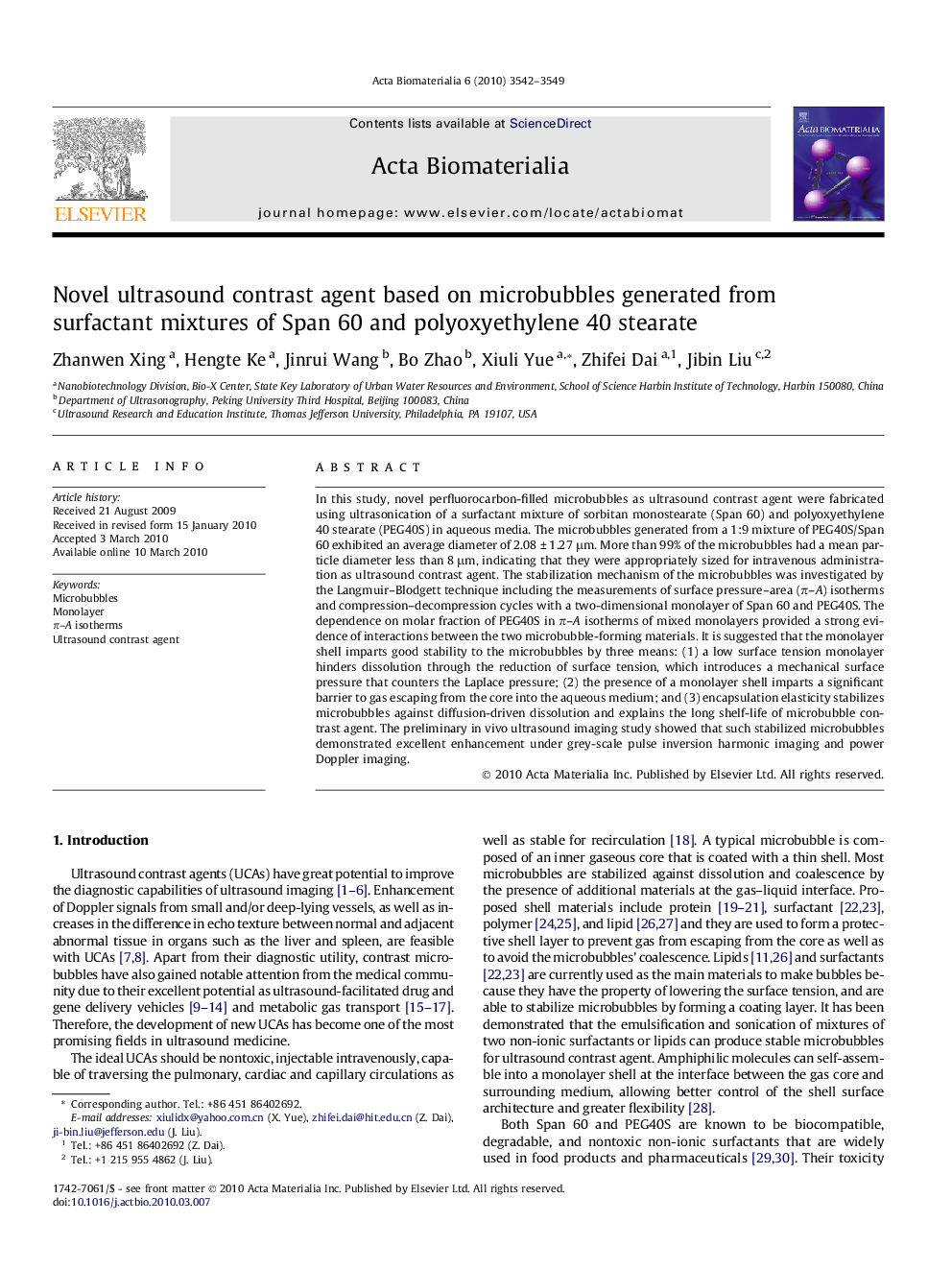| Article ID | Journal | Published Year | Pages | File Type |
|---|---|---|---|---|
| 2148 | Acta Biomaterialia | 2010 | 8 Pages |
In this study, novel perfluorocarbon-filled microbubbles as ultrasound contrast agent were fabricated using ultrasonication of a surfactant mixture of sorbitan monostearate (Span 60) and polyoxyethylene 40 stearate (PEG40S) in aqueous media. The microbubbles generated from a 1:9 mixture of PEG40S/Span 60 exhibited an average diameter of 2.08 ± 1.27 μm. More than 99% of the microbubbles had a mean particle diameter less than 8 μm, indicating that they were appropriately sized for intravenous administration as ultrasound contrast agent. The stabilization mechanism of the microbubbles was investigated by the Langmuir–Blodgett technique including the measurements of surface pressure–area (π–A) isotherms and compression–decompression cycles with a two-dimensional monolayer of Span 60 and PEG40S. The dependence on molar fraction of PEG40S in π–A isotherms of mixed monolayers provided a strong evidence of interactions between the two microbubble-forming materials. It is suggested that the monolayer shell imparts good stability to the microbubbles by three means: (1) a low surface tension monolayer hinders dissolution through the reduction of surface tension, which introduces a mechanical surface pressure that counters the Laplace pressure; (2) the presence of a monolayer shell imparts a significant barrier to gas escaping from the core into the aqueous medium; and (3) encapsulation elasticity stabilizes microbubbles against diffusion-driven dissolution and explains the long shelf-life of microbubble contrast agent. The preliminary in vivo ultrasound imaging study showed that such stabilized microbubbles demonstrated excellent enhancement under grey-scale pulse inversion harmonic imaging and power Doppler imaging.
